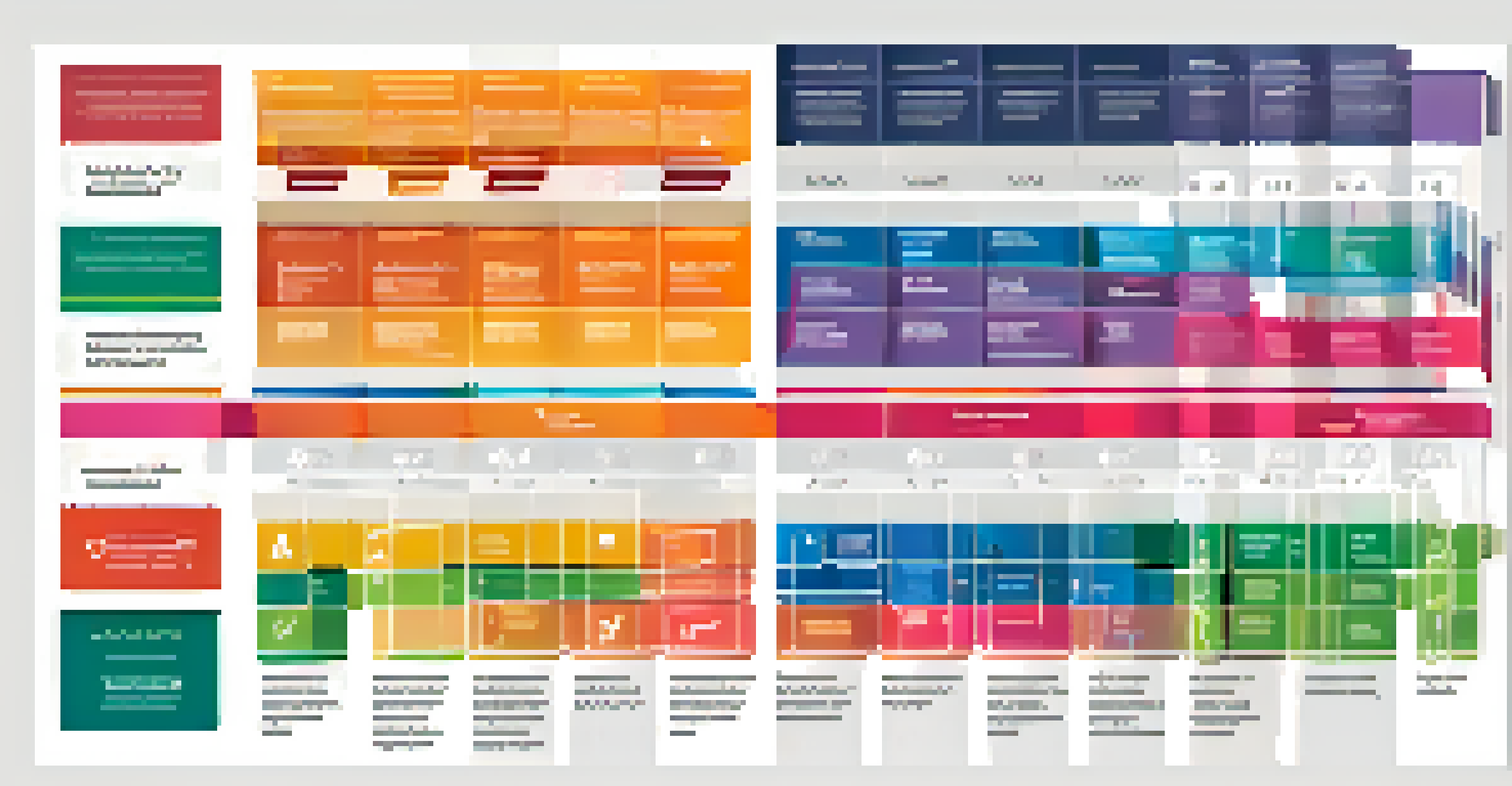Brain-Based Techniques for Enhancing Online Course Retention

Understanding the Science Behind Learning and Retention
To enhance online course retention, it's essential to grasp how our brains learn. Neuroscience tells us that learning is not just about memorizing facts; it's a dynamic process involving various brain regions. By understanding this, course creators can design content that aligns with how the brain naturally processes information.
Learning is not the product of teaching. Learning is the product of the activity of learners.
For example, the brain thrives on connections. When learners can relate new information to what they already know, they are more likely to retain it. This means that incorporating real-life examples or personal anecdotes can significantly enhance engagement and retention rates in online learning.
Additionally, emotional engagement plays a critical role. When learners feel a connection to the material, whether through storytelling or relatable situations, they are more likely to remember it. Thus, tapping into emotions can be a powerful strategy for creating lasting impressions.
Incorporating Active Learning Techniques for Better Retention
Active learning is a method where learners actively engage with the material rather than passively absorbing information. Techniques like discussions, problem-solving, and group projects encourage students to think critically and apply their knowledge. This hands-on approach can significantly improve retention rates in online courses.

For instance, incorporating quizzes or interactive scenarios throughout the course can help reinforce learning. When students are prompted to recall information or apply concepts, it strengthens their memory and understanding. These interactive elements keep learners engaged and invested in their education.
Active Learning Boosts Retention
Engaging students through discussions and interactive activities significantly enhances their retention of course material.
Moreover, active learning fosters a sense of community among learners. By working together, students can share insights, ask questions, and support each other. This collaborative environment can lead to higher satisfaction and retention rates, as learners feel they are part of a collective journey.
Utilizing Spaced Repetition for Long-Term Retention
Spaced repetition is a technique rooted in cognitive psychology that involves reviewing material at increasing intervals. This method capitalizes on the brain's natural forgetting curve, helping learners retain information for the long haul. By structuring course content to revisit key concepts periodically, you can significantly enhance retention.
The mind is not a vessel to be filled, but a fire to be kindled.
An example of this approach could be integrating periodic review sessions or flashcards throughout the course. Instead of cramming all information at once, students revisit topics strategically, allowing their brains to consolidate learning effectively. This aligns with how we naturally learn and remember.
Incorporating spaced repetition not only boosts retention but also reduces anxiety around assessments. When learners know they will revisit the material over time, they feel more prepared and confident. This leads to a more positive learning experience overall.
The Power of Visuals in Enhancing Learning Experience
Visual aids like infographics, videos, and diagrams can significantly enhance the learning experience. Research shows that our brains process visuals faster than text, making them a powerful tool for retention. By integrating visuals into online courses, you can cater to different learning styles and keep students engaged.
For example, a complex concept explained through a video can be more digestible than a lengthy article. Visual storytelling captures attention and makes the information more relatable. When learners can visualize concepts, they are more likely to understand and remember them.
Spaced Repetition Aids Memory
Reviewing material at increasing intervals helps learners retain information longer by aligning with the brain's natural learning processes.
Moreover, using consistent and appealing visual elements throughout the course can help create a cohesive learning environment. This familiarity can make the content feel more approachable, encouraging learners to dive deeper and engage more fully with the material.
Encouraging Self-Regulated Learning for Empowerment
Self-regulated learning is when learners take control of their own educational journey. This involves setting goals, monitoring progress, and adjusting tactics as needed. Encouraging students to adopt this mindset can lead to greater ownership of their learning, ultimately enhancing retention.
For instance, providing tools for goal-setting or tracking progress can motivate learners to engage more deeply with the material. When students can see their achievements, no matter how small, they feel empowered to continue pushing forward. This sense of agency is a key factor in retention.
Additionally, fostering a growth mindset—where students view challenges as opportunities—can further enhance self-regulation. By reassuring learners that it's okay to struggle and that persistence pays off, you create a supportive environment conducive to long-term learning.
Creating a Supportive Online Learning Community
Building a supportive community among online learners can significantly enhance retention rates. When students feel connected to their peers and instructors, they are more likely to stay engaged and committed to the course. This sense of belonging can be a powerful motivator.
For instance, implementing discussion forums or group projects fosters collaboration and communication. When learners share their experiences and insights, it enriches the educational experience for everyone. Creating spaces for interaction encourages students to help each other, which can lead to a more cohesive learning environment.
Supportive Communities Enhance Learning
Creating a connected online learning environment fosters collaboration and motivation, ultimately improving student engagement and retention.
Moreover, regular check-ins and feedback from instructors can help maintain this community spirit. When students know their progress is being monitored and valued, they are more likely to stay motivated and invested in their learning journey.
Implementing Feedback Loops for Continuous Improvement
Feedback loops are essential for enhancing learning experiences and improving retention. By providing timely and constructive feedback, instructors can help students understand their strengths and areas for improvement. This ongoing dialogue encourages learners to reflect on their progress and adapt their learning strategies.
For example, using quizzes or assignments that include personalized feedback can guide students in their learning journey. When learners know where they stand, they can focus on the areas that need more attention. This not only boosts their confidence but also reinforces their commitment to the course.

Additionally, encouraging learners to give feedback about the course itself can create a more responsive learning environment. When students feel their voices are heard, they are more likely to stay engaged and invested in their education.